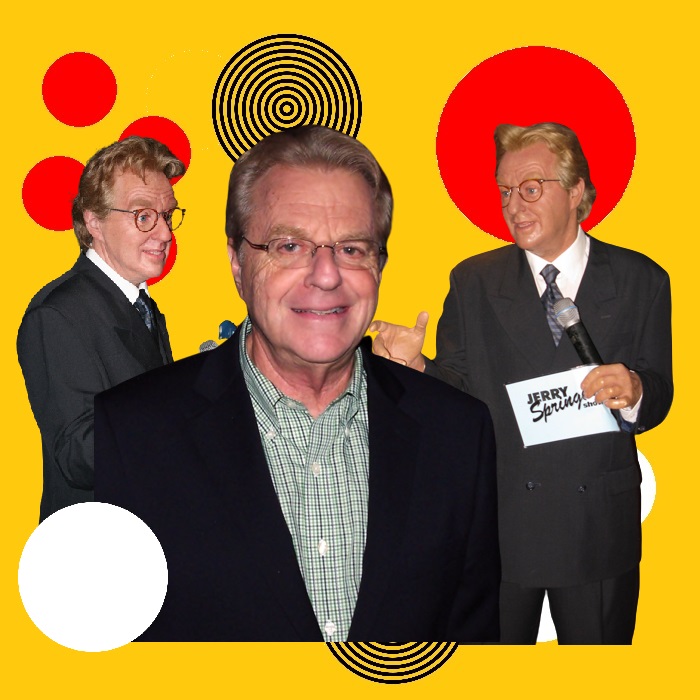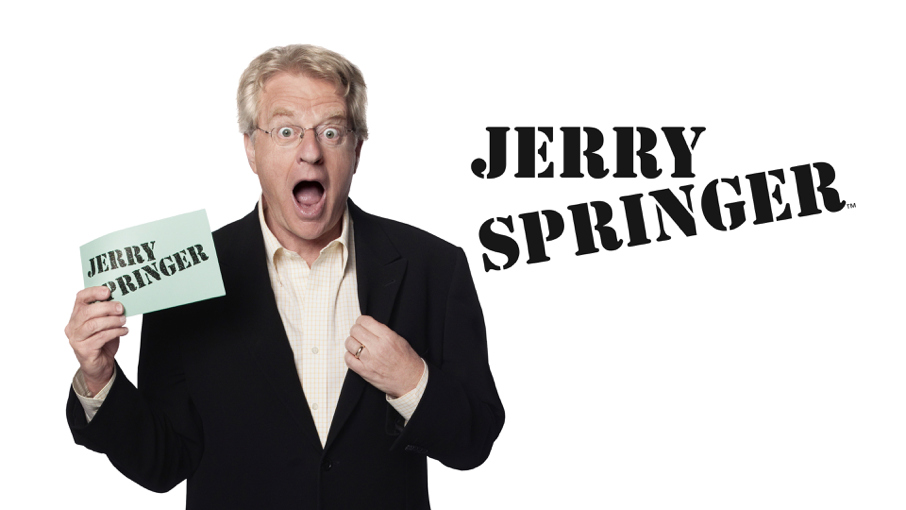
Jerry Springer may have perfected the art of chasing ratings, but his predecessors laid the groundwork.
In a widely quoted New York Times column, the paper of record called his TV program “an electronic peepshow.” The Times’ media critic, Jack Gould, accused him of “making a commercial virtue of cheap sensationalism” and exploiting the worst in human behavior, just to get ratings.
But this was not a critique about controversial talk show host Jerry Springer, who died on April 27, 2023. It was a column about an equally controversial talk show host named Joe Pyne, who pioneered an opinionated and confrontational style of program, first on radio and then on TV, where he insulted callers and argued with guests.
Gould wrote the article on June 5, 1966.
In other words, we’ve been here before.
The death of Springer has prompted many comments about his role in America’s toxic media culture. Writing in The Guardian, Michael Carlson noted that while Springer was not the first to try this formula, he elevated it to an art form, leading to “the rise of so-called reality television, in which contestants chosen for their exhibitionism tried to outdo each other in humiliations and conflicts created and scripted by the producers.”
But I think it’s important to put Springer’s passing in perspective and consider him in the context of some decadeslong media trends.
Misplaced nostalgia
As far back as the 1930s, parents were complaining that some radio programs were setting a bad example for their kids.
When television came along, those complaints intensified. In 1961, Federal Communications Commission Chair Newton N. Minow gave his “vast wasteland” speech, in which he criticized television executives for endless hours of “game shows, violence, audience participation shows, formula comedies, blood and thunder, mayhem, violence, sadism, murder … private eyes, gangsters, more violence, and cartoons.”
There are fond recollections of a time when the media were kinder and gentler, when the fairness doctrine kept the nation’s airwaves from descending into partisan chaos. Even Minow has continued to insist that the fairness doctrine served a positive purpose because it ensured that both sides of issues were heard.
But as media historian Michael Socolow has pointed out, the fairness doctrine was never a magic answer.
When I wrote my book about talk shows, “Icons of Talk,” I explored how the genre had gradually evolved from informative – and, let’s be honest, sometimes dull – discussions between the host and experts to a more combative style championed by Pyne and his radio successor, Bob Grant, a hard-right conservative who frequently insulted liberals, Black people, welfare recipients, feminists, gay people and anyone who disagreed with him.
Controversial programs, including “The Joe Pyne Show,” were on the air while the fairness doctrine was in force, and so were Grant and others of his ilk.
Similarly, while the FCC used to exert tighter control over offensive language, making it more difficult for DJs to push the envelope, a Los Angeles announcer named Bill Ballance was able to debut “topless radio” in 1971. It was a call-in format in which listeners, mostly women, revealed intimate details of their sex life to Ballance.
Critics called the show obscene, and some people wrote irate letters to the FCC. But the show proved wildly popular, becoming No. 1 in its time slot in Los Angeles, and imitators cropped up around the country. (After receiving thousands of complaints, the FCC finally took action in 1973, warning stations broadcasting “topless radio” to stop airing “prurient trash.”)
Fighting for eyeballs
While Socolow is right that there never were any “good old days,” it’s worth noting that in the period from the 1920s through the 1960s, controversial programs were still the exception.
This was the era prior to deregulation, and the FCC played a more active role in approving or denying broadcasting licenses. Most station owners tried to avoid getting bad publicity that might upset the FCC and also alienate potential advertisers.
But then the media landscape changed.
By the time Springer hosted his first television show in 1991, the deregulation of broadcasting was well underway. For better or worse, the fairness doctrine was gone, and one-sided, partisan talk radio programs with outspoken hosts were proliferating. There was also more competition.
When I was growing up in the 1950s, there were only a handful of TV channels on the air. But by the late 1980s, the number of broadcast channels had steadily increased, and cable TV was experiencing dramatic growth, giving viewers even more choices. (Not everyone was impressed with all of those options; Bruce Springsteen’s 1992 song “57 Channels and Nothing On” reflected the opinion that more didn’t always mean better.)
Given all of the competition, this meant even greater pressure on program hosts to get good ratings to generate revenue for their station. With so many programs, holding the audience’s attention was a challenge.
Even the news departments, historically immune from ratings pressures, were affected: News segments were shortened because people’s attention spans were becoming shorter, and news anchors were expected to be more personable. The serious and dispassionate style of anchoring, personified by Walter Cronkite, was replaced with conversational banter.
Springer, a former newscaster and politician, initially tried a traditional and issues-oriented daytime talk show. But when ratings sagged, he gradually transitioned to a program guaranteed to attract more attention.
The revamped “Jerry Springer Show” was proudly lowbrow, an often-chaotic and always-combative show that was cheap to produce and had a simple formula: Viewers could be voyeurs, watching as the guests fought.
A guest might confront their spouse’s paramour, or reveal having a second family. Accusations flew, people screamed at each other and sometimes the set turned violent, with the Springer security force always primed to break up the fights. The studio audience cheered it all on, gleefully shouting “Jerry! Jerry!” as Springer stood by, calmly observing the chaos, the ringmaster of his trashy but very successful circus.
His show became the program the critics loved to hate. But as with Ballance, it became a ratings juggernaut. It was syndicated across the country and aired for 27 years. At its height, “The Jerry Springer Show” attracted as many as 8 million viewers.
When criticized, Springer defended his show, which also opened the door for other equally outrageous daytime tabloid programs to flourish. As he told media critic Eric Deggans in 1997, the show had a positive purpose.
“When TV is at its best, it’s like a mirror. … If this does nothing more than get people to sit around the dinner table and discuss this, it’s done some good.”
In reality, the Springer show was never about “TV at its best.” It was all about getting big ratings.
As a media historian, I’m aware that there have been many other outrageous programs on the air. But I must admit I don’t understand the fascination with watching people at their lowest moments.
Chances are the next Jerry Springer will have to be even more outrageous, someone who does something different from what has already been done before. Tabloid, sensationalist programs have been written off before, and yet they keep attracting viewers.
Until audiences decide they no longer want to buy what this type of program is selling, it’s only a matter of time before the next Springer emerges.![]()
Donna L. Halper, Lesley University
Donna L. Halper, Associate Professor of Communication, Lesley University
This article is republished from The Conversation under a Creative Commons license. Read the original article.

